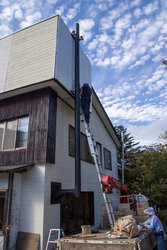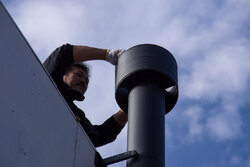Today we've got the fourth storm in a month. Winds outside are gusting close to 80 mph.
I live on top of a hill, and when it's windy here it sounds really loud in the chimney and also in the stove.
The fire inside the stove is very affected by high winds; even with the primary air closed right off, wood burns really hard and fast and, when there's a strong gust, the secondary air gets pulled so strong through the tubes that they look as though they sort of get blown out. The flames are waving wildly inside the fire box. On the strongest gusts the smaller splits are moving a little!
I'm wondering how others' burning experiences are affected in high winds and how they compare to what I've described?
I live on top of a hill, and when it's windy here it sounds really loud in the chimney and also in the stove.
The fire inside the stove is very affected by high winds; even with the primary air closed right off, wood burns really hard and fast and, when there's a strong gust, the secondary air gets pulled so strong through the tubes that they look as though they sort of get blown out. The flames are waving wildly inside the fire box. On the strongest gusts the smaller splits are moving a little!
I'm wondering how others' burning experiences are affected in high winds and how they compare to what I've described?





